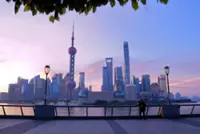A Gravlev village and river landscape in northern Denmark.
Paris, Rome, New York, Venice: According to data from Virtuoso, a global network of travel advisers, the most-booked cities this year contain few surprises.
One great option – Denmark – ranks nowhere on the list. That’s a selling point in itself, say the country’s tourism officials. To wit: Its latest tourism marketing campaign includes animated versions of the New York’s Statue of Liberty and the Mona Lisa telling travellers that standing in line for hours to see them “isn’t exactly the most exciting way to spend your holiday”.
Already a subscriber? Log in
Save 30% OFF The Star Digital Access
Cancel anytime. Ad-free. Unlimited access with perks.





